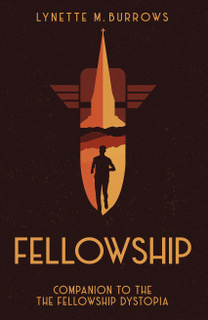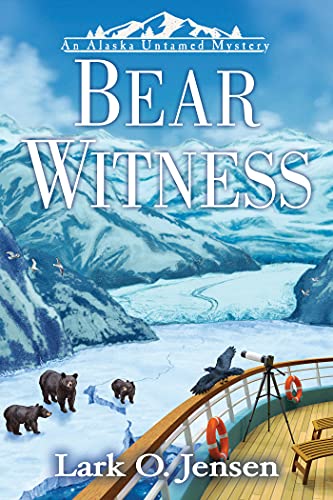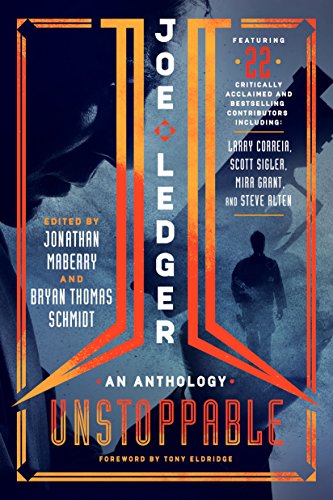What Is It About Virginity?
May 24, 2012 by A Slice of Orange in category ArchivesSo What Are You Wearing to the Rita’s? No Really…
May 23, 2012 by A Slice of Orange in category Archives tagged as 2012 National RWA Conference, manuscripts, pitching to agents and editors, semi-formal fashionMay/June Contest Deadlines
May 20, 2012 by Marianne H. Donley in category Archives tagged as Contest Deadlines, Donna Caubarreaux, Pepper Phillipsby Donna Caubarreaux and Pepper Phillips
MAY CONTEST DEADLINES
The Molly
Entry Deadline: May 25, 2012
First pages up to 30. Synopsis: Up to five pages max.
http://www.hodrw.com/contests/the-2012-molly-unpublished-writer-contest/
Emerald City Opener
Greater Seattle RWA
Deadline: May 31, 2012
First seven pages of your manuscript.
http://gsrwa.org/contest.php
JUNE CONTEST DEADLINES
The Catherine
Toronto Romance Writers
Due by June 1, 2012 – 11:59 EST
Enter no more than thirty pages. Beginning + Synopsis.
http://www.torontoromancewriters.com/contest.html
Colorado Gold Writing Contest
Rocky Mountain Fiction Writers
Deadline: June 1, 2012 – 11:59pm
First twenty pages and eight page synopsis.
http://www.rmfw.org/contest
Minuet of Love Novella Contest
Music City Romance Writers
Deadline: before Midnight, June 1, 2012
First ten pages.
http://www.mcrw.com/index.php/minuet-of-love-novella-contest/
Lone Star Contest
Northwest Houston RWA
Received by Midnight, June 9, 2012
First twenty-five pages.
http://nwhrwa.com/writers-events/lonestar-contest/
Maggie for Unpublished Authors Contest
Georgia Romance Writers
Received by June 10, 2012
Beginning and synopsis not to exceed thirty-five pages.
http://www.georgiaromancewriters.org/the-maggies/2011-maggie-awards-for-unpublished-romance-novelists-rules/
Aspen Gold for Published Authors
Heart of Denver Romance Writers
Received by June 15, 2012
Copyright of 2011
http://www.hodrw.com/contests/welcome-to-the-2012-aspen-gold-published-writers-contest/aspen-gold-entry-forms/
Heart of Excellence for Published Authors
Ancient City Romance Authors
Postmarked by June 15, 2012
Copyright of 2011
http://acrarwa.com/Heart_of_Excellence.html
RWA Region 1 – Golden Leaf Contest for Published Authors
New Jersey Romance Romance Writers
Postmarked by June 20th, received by June 25, 2012
Copyright date of July 2011 – June 2012
http://njromancewriters.org/index.php?/njrw_contest/golden_leaf_contest/
Beacon Contest for Published Authors
First Coast Romance Writers
Postmarked by June 30, 2012
Copyright of 2011
http://www.firstcoastromancewriters.com/?page_id=215
Novel Contest: Great Beginnings
Maryland Writers’ Association
Ends June 30, 2012
First 7000 words of your novel and a 300-500 word synopsis of the novel.
http://www.marylandwriters.org/
Deadline June 30, 2012
Opening 5k words.
http://www.leranm.com/
Check out Contests and Contest Winners on: http://contestdivas.blogspot.com/
Check out the Award Winning Romance Books on: http://awardwinningromances.blogspot.com/
…
Contest Alert-All the news on upcoming contests, plus Finalist & Winner listings, questions, etc. Sign up now!
ContestAlert-subscribe@yahoogroups.com
…
Announcement only list: M
ContestDeadlines-subscribe@yahoogroups.com
…
For Published Authors
ContestAlertPublished-subscribe@yahoogroups.com
…
If you’re a Contest Judge, join
ContestsJudges-subscribe@yahoogroups.com
Donna Caubarreaux is a member of Coeur de Louisiane, Scriptscene Chapter, NOLA Stars, Heart of Louisiana, ESPAN and EPIC. She received a RWA Service Award in 1997.
Pepper Phillips is the author of “The Devil Has Dimples”.
PARTY TIME!!!!!!!!!!!
May 20, 2012 by A Slice of Orange in category ArchivesMona Karel, member at large
Yep, it’s time for the launch party for “Teach Me to Forget,” the second rose I received at the April meeting. Release was actually last Saturday, with Amazon jumping the gun by a couple of days. Since everyone I know was busy doing something else, I had a party by myself. Sort of.

I got a case of Black Opal wine.
My very prettiest wine goblet, and brought up Teach Me To Forget on the computer.
Didn’t actually open the wine, I’ll wait until some friends come over. But I did stage a wicked party, don’t you think???
“Teach Me To Forget” came from the first time we rented a motor home. Lying snuggled up in the top bunk, rain pattering on the roof just a few inches above our heads, was amazingly cozy and romantic. The story grew from that moment. Of course I made Jonathan and Bethany go through a long “getting to know you” span of time before they could really enjoy that bunk.
 An abused child-bride of a dissolute jet setter, Bethany Acton has come a long way. Now divorced and single, she writes for a lifestyles magazine, lives out of her motor home, and answers only to her boss—when he can find her. She has overcome her horrendous past and taken control of her own life. But when she meets Jonathan Merritt, a wildlife photographer, she learns that control is a tenuous thing.
An abused child-bride of a dissolute jet setter, Bethany Acton has come a long way. Now divorced and single, she writes for a lifestyles magazine, lives out of her motor home, and answers only to her boss—when he can find her. She has overcome her horrendous past and taken control of her own life. But when she meets Jonathan Merritt, a wildlife photographer, she learns that control is a tenuous thing.
What A Dog!
May 15, 2012 by A Slice of Orange in category Archives tagged as Animals, cats, Craft, dogs, horses, Pets, Rebecca Forster, thrillers, writing |
| My grand dog Tucker |
As an author and a reader I had to ask myself: Why is a book that includes animals richer, more entertaining, and more engaging than one without? The answer was simple: Animals bring out the best and the worst in a human character. This makes for great drama and provides an emotional touch point that is critical for an exciting read.
Max-the-Dog (his legal name) was originally created as a reflection of Josie, his mistress. Both had been abandoned, both had to fight for their lives, both were protective of others. But Max became so much more than Josie’s mirror as the series unfolded.
Here are four ways Max made a difference in the witness series:
HE ENHANCED HUMAN CHARACTERIZATION: Those who attack him were inherently more evil than a bad guy who ignored him. Those who love Max were more admirable because they cared for and protect him.
HE WAS AN ANIMATED SOUNDING BOARD: Internal dialogue can be tedious. Allow a character to speculate to an animal and the rhetorical questions or monologues sound natural.
HIS PRESENCE SET A TONE: A scene tone can be set by the way a human character speaks to or interacts with an animal counterpart. A whispered warning creates a much different tone than a screaming command; a languid pet conjures up different visions than a playful ruffling of fur.
HE HELPED MOVE THE PLOT FORWARD: An animal’s needs can put a human in a place they might not have been in. For instance, in Privileged Witness, Josie took Max out for his evening constitutional and ran into her fugitive client who was hiding outside. Without Max, Josie would have no reason to go outside and never would have discovered her client. An animal’s heightened senses can also assist a human to warn of danger or alert a human to a change in their surroundings.
From The Hound of the Baskervilles to Lassie and Blue Dog, My Friend Flicka and The Black Stallion, The Cheshire Cat and Puss-in-Boots, animals have frolicked as humans, served to reflect human frailties and strengths, and just plain worked their way into reader’s hearts because of who they are.
So, to the kind lady who was concerned about Max, have no fear. He will never come to a violent end. No matter what happens to him, his presence or lack thereof, will be a decision motivated by story and plot and, of course, love, because Max is as real to me as if he sat at my feet while I wrote my stories.
*Hostile Witness is free for all e-readers and is also available in print.
Affiliate Links
A Slice of Orange is an affiliate with some of the booksellers listed on this website, including Barnes & Nobel, Books A Million, iBooks, Kobo, and Smashwords. This means A Slice of Orange may earn a small advertising fee from sales made through the links used on this website. There are reminders of these affiliate links on the pages for individual books.
Search A Slice of Orange
Find a Column
Archives
Featured Books
BEAR WITNESS
Alaska tour boat guide Stacie Calder faces the deep freeze
More info →STARTING OVER WITH THE SHERIFF
Starting anew? But what if he learns the truth?
More info →THE STARMIND ALERT
A psychic thriller that tries to catch an arch terrorist who is like a greased cat.
More info →Newsletter
Contributing Authors
Search A Slice of Orange
Find a Column
Archives
Authors in the Bookstore
- A. E. Decker
- A. J. Scudiere
- A.J. Sidransky
- Abby Collette
- Alanna Lucus
- Albert Marrin
- Alice Duncan
- Alina K. Field
- Alison Green Myers
- Andi Lawrencovna
- Andrew C Raiford
- Angela Pryce
- Aviva Vaughn
- Barbara Ankrum
- Bethlehem Writers Group, LLC
- Carol L. Wright
- Celeste Barclay
- Christina Alexandra
- Christopher D. Ochs
- Claire Davon
- Claire Naden
- Courtnee Turner Hoyle
- Courtney Annicchiarico
- D. Lieber
- Daniel V. Meier Jr.
- Debra Dixon
- Debra H. Goldstein
- Debra Holland
- Dee Ann Palmer
- Denise M. Colby
- Diane Benefiel
- Diane Sismour
- Dianna Sinovic
- DT Krippene
- E.B. Dawson
- Emilie Dallaire
- Emily Brightwell
- Emily PW Murphy
- Fae Rowen
- Faith L. Justice
- Frances Amati
- Geralyn Corcillo
- Glynnis Campbell
- Greg Jolley
- H. O. Charles
- Jaclyn Roché
- Jacqueline Diamond
- Janet Lynn and Will Zeilinger
- Jaya Mehta
- Jeff Baird
- Jenna Barwin
- Jenne Kern
- Jennifer D. Bokal
- Jennifer Lyon
- Jerome W. McFadden
- Jill Piscitello
- Jina Bacarr
- Jo A. Hiestand
- Jodi Bogert
- Jolina Petersheim
- Jonathan Maberry
- Joy Allyson
- Judy Duarte
- Justin Murphy
- Justine Davis
- Kat Martin
- Kidd Wadsworth
- Kitty Bucholtz
- Kristy Tate
- Larry Deibert
- Larry Hamilton
- Laura Drake
- Laurie Stevens
- Leslie Knowles
- Li-Ying Lundquist
- Linda Carroll-Bradd
- Linda Lappin
- Linda McLaughlin
- Linda O. Johnston
- Lisa Preston
- Lolo Paige
- Loran Holt
- Lynette M. Burrows
- Lyssa Kay Adams
- Madeline Ash
- Margarita Engle
- Marguerite Quantaine
- Marianne H. Donley
- Mary Castillo
- Maureen Klovers
- Megan Haskell
- Melanie Waterbury
- Melisa Rivero
- Melissa Chambers
- Melodie Winawer
- Meriam Wilhelm
- Mikel J. Wilson
- Mindy Neff
- Monica McCabe
- Nancy Brashear
- Neetu Malik
- Nikki Prince
- Once Upon Anthologies
- Paula Gail Benson
- Penny Reid
- Peter Barbour
- Priscilla Oliveras
- R. H. Kohno
- Rachel Hailey
- Ralph Hieb
- Ramcy Diek
- Ransom Stephens
- Rebecca Forster
- Renae Wrich
- Roxy Matthews
- Ryder Hunte Clancy
- Sally Paradysz
- Sheila Colón-Bagley
- Simone de Muñoz
- Sophie Barnes
- Susan Kaye Quinn
- Susan Lynn Meyer
- Susan Squires
- T. D. Fox
- Tara C. Allred
- Tara Lain
- Tari Lynn Jewett
- Terri Osburn
- Tracy Reed
- Vera Jane Cook
- Vicki Crum
- Writing Something Romantic
Affiliate Links
A Slice of Orange is an affiliate with some of the booksellers listed on this website, including Barnes & Nobel, Books A Million, iBooks, Kobo, and Smashwords. This means A Slice of Orange may earn a small advertising fee from sales made through the links used on this website. There are reminders of these affiliate links on the pages for individual books.









































